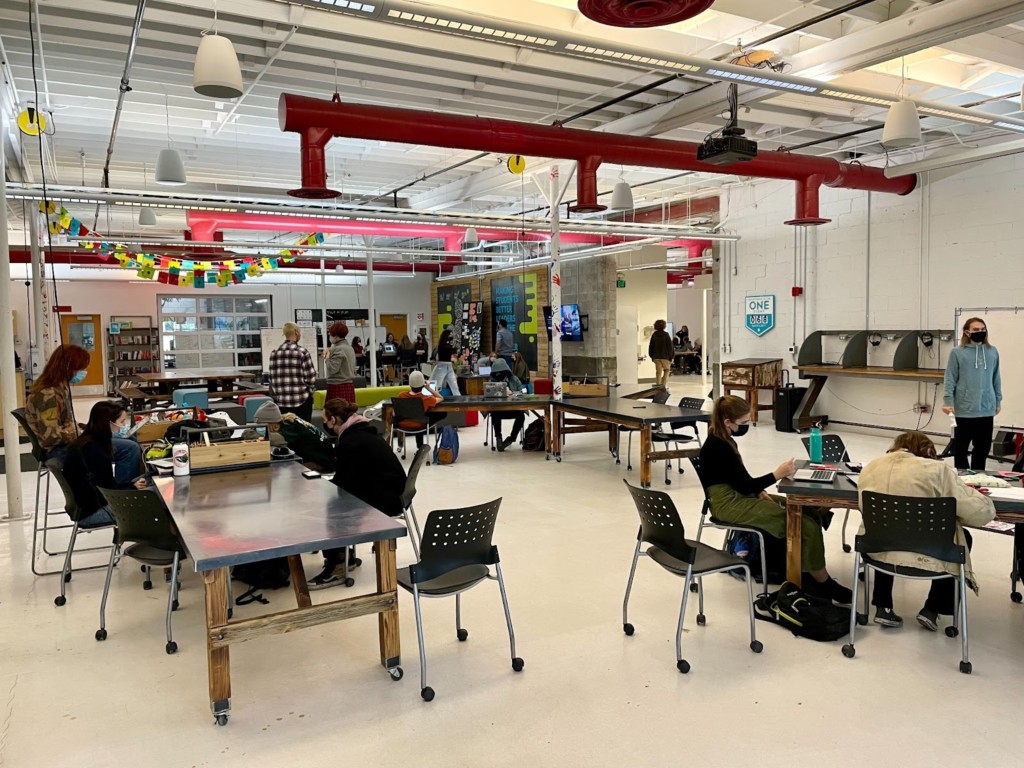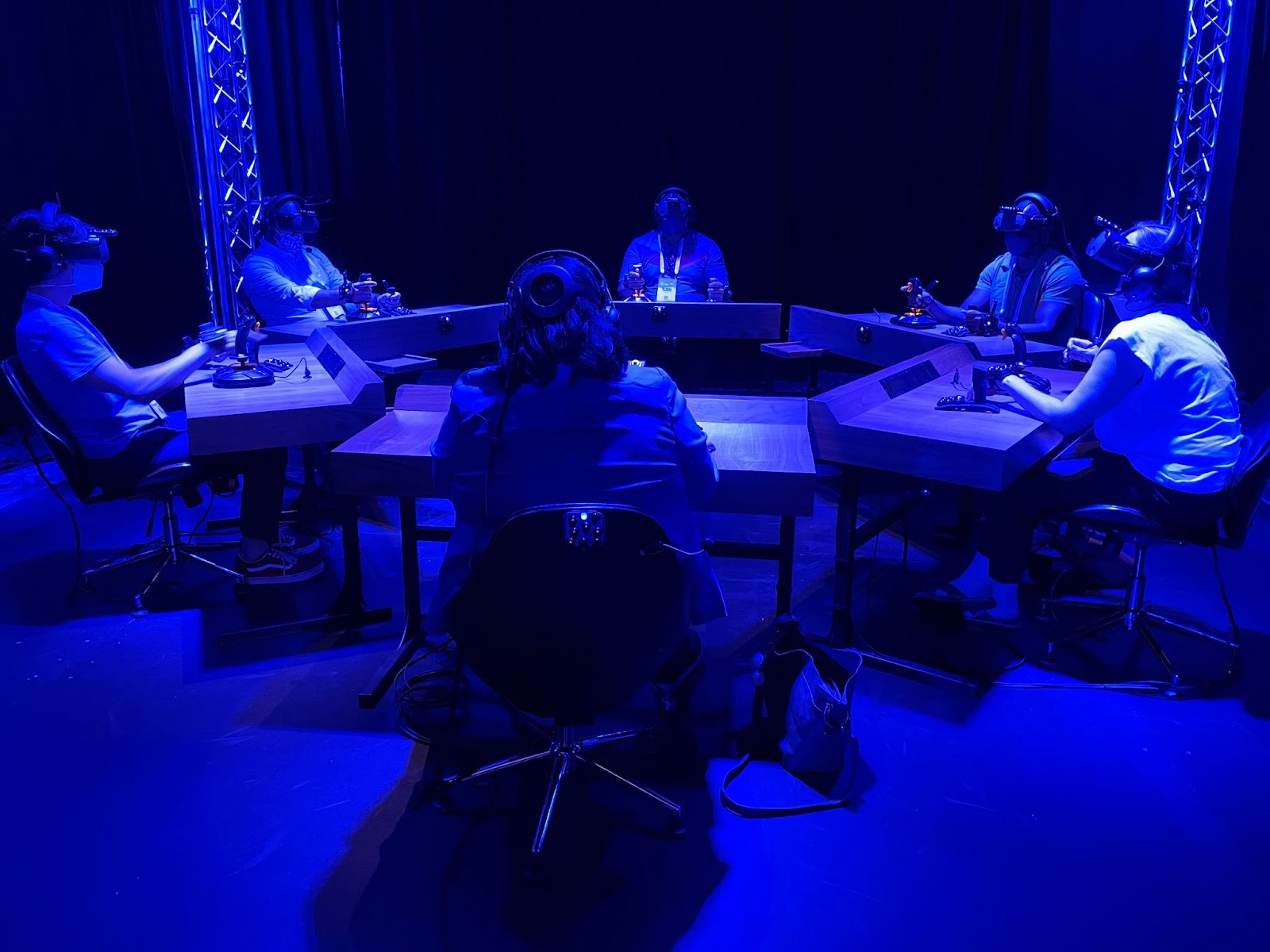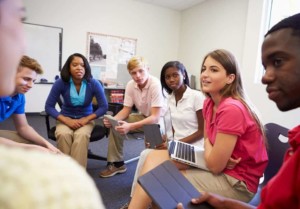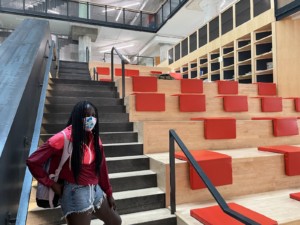Five Building Blocks in the New Architecture of High Schools
Key Points
-
Schools personalizing learning and moving to mastery often use five linked learner experience systems to promote growth on learning goals.
-
Each system has unique learner experiences, feedback protocols, supports and staffing strategies.
-
These systems work independently and together to promote learner-centered growth toward shared outcomes.

Opening new schools and setting new goals creates the opportunity to intentionally design learner experiences. Rather than relying on a list of courses to be passed, teams leading innovative high schools ask, “What’s the best way to develop and demonstrate important competencies?”
Schools personalizing learning and moving to mastery or competency-based learning models often use five linked learner experience systems to promote growth on learning goals: skill-building, projects, immersion, advisory, and out-of-school learning. Each system has unique learner experiences, feedback protocols, supports and staffing strategies. These systems work independently and together to promote learner-centered growth toward shared outcomes (i.e., learner profile or portrait of a graduate).
Blended Skill Building
Blended skill building units of study often combine autonomous use of adaptive software with individual and small group tutoring in a flex or station rotation model. Most common in K-8 literacy and numeracy development, flex blends and flipped learning are becoming more common in high school. A growing number of high schools and colleges (including ASU) use ALEKS in a blended math workshop model.
Blended learning supports more autonomy like the gradual release model at Huntley High where on-track students attend class two days a week. Blended models can also facilitate individual progress models where learners progress as they demonstrate mastery.
Blended skill-building decisions:
- Digital and adaptive curriculum
- Strategies for combining online and small group instruction
- Strategies for combining multiple assessments to track growth and make mastery judgements
- Provisioning extra time and support for learners that need it
Project-Based Learning
Projects and inquiry-based experiences (both individual and team) provide opportunities for exploration and application across the curriculum. They may develop problem definition, data analysis, design, problem-solving and project management skills. With each project, schools in the New Tech Network assess agency, collaboration, oral and written communication.
Projects may reside in content courses, integrated blocks, or big blocks focused on community challenges.
Purdue Polytechnic High in Indianapolis and DaVinci Schools in Los Angeles, sources projects from business partners. Watershed School in Boulder links projects (called expeditions) to Global Goals.
Project-based learning decisions:
- How to balance student interest and content standards in coauthoring projects
- How to cover core competencies in a sequence of projects
- How to support project success with skill building
- How to provide time and support to learners before and during projects to ensure success
Immersive Experiences
Identity development, problem-solving and future state explorations can take place in immersive experiences including work-based, service-based, place-based, and game-based learning.
Cajon Valley USD learners experience 54 immersive World of Work career exploration units in K-8 (and they are being extended into a new high school). The units incorporate core academic expectations as well as career application opportunities. After each unit, learners reflect on their strengths, interests and values.
Students in Big Picture high schools typically learn through internships two days a week. Given the extensive time commitment to work-based learning, Big Picture schools integrate core curriculum expectations and credit into internships and support them with skill-building. The ImBlaze app helps learners locate and manage internship experiences.
Learners in 75 metro Kansas City high schools are gaining access to internships and entrepreneurial experiences as part of the Real World Learning initiative.
Immersive experiences will expand with broader use of virtual reality. This month, ASU launched a virtual reality biology class. Virtual reality is already widely used in job skills training.

Immersive experience decisions:
- Locating, framing and preparing for work-based learning experiences
- How to combine skills assessment in a virtual setting with physical observations to ensure transferability
- How to collect and use performance feedback from out of school advisors, mentors, and workplace supervisors
Advisory Systems
Many secondary schools use an advisory system–a regular small group meeting with a teacher–to monitor academic and social progress; conduct career and college awareness and planning; and provide coaching on personal effectiveness and relationship skills. Advisory can be the most important contributor to learner agency–the self-knowledge and capacity to act on the world.
Broader access is key to more equitable outcomes.
Tom Vander Ark
The One Stone growth transcript is an effective competency monitoring tool used to chart progress across 32 outcome areas. In addition to progress monitoring across the whole outcome framework, the One Stone advisory is a space for purpose finding and skill-building. The Living in Beta curriculum helps learners explore their passions and discover their purpose.
Compass by Valor Collegiate Academies is a well-designed interpersonal skill-building system used by schools nationwide. At the heart of Compass is Circle time when groups come together to support themselves and each other in their personal development.
We Are Crew from EL Education is a rich set of strategies and resources for creating a strong mutually supportive culture in advisory and across a school.
Advisory decisions:
- Monitor progress and pacing across all learning goals
- Set short and long term goals
- Build core skills including self management and interpersonal skills
Extended Learning Opportunities
With adoption of broader learning goals including leadership, agency, and collaboration, extracurricular and out-of-school activities are becoming more valued developmental experiences. Broader access is key to more equitable outcomes. They involve low risk and high choice and may include problem-solving (e.g., coding, robotics club) or immersive experiences (e.g., performance art, sports, work).
In a recent paper, Credit for Learning: Making Learning Outside of School Count, the AfterSchool Alliance argued that valuable experiences should count for progress toward graduation.
Skill credentialing is expanding in many workplaces and will soon move into high schools. Credentialing systems will also be used to value and communicate out-of-school learning. This will give learners more choices about where and how to develop and demonstrate competency.
Out of school decisions:
- How to extend access to extended learning opportunities
- How to assess and credential learning
- How to count out of school learning for progress toward graduation
How Schools Combine the Building Blocks
Purdue Polytechnic High pushed the old structure of courses into the background and combines individualized skill building with community-connected projects with a robust advisory system.
Summit Public Schools combines skill-building and problem-solving into a unified blend supplemented by a daily advisory system and periodic immersions (2-week expeditions between 8-week terms).
Some national networks bring particular building blocks to the foreground:
- Big Picture foregrounds immersion with two days a week of Leaving to Learn
- New Tech Network schools foreground integrated project-based learning.
- Altus Schools foreground personalized blended learning to increase flexibility and accelerate high school completion.
How Schools Create Coherence Across the Building Blocks
In his new book, The Education We Need for a Future We Can’t Predict, Dr.Thomas Hatch presents a framework for improvement: capacity building, coherence, collective responsibility.
For two decades, Hatch has been the leading proponent of coherence –that system components contribute to purpose, meaning, and alignment–more simply, that everything works together for teachers and students.
With five building blocks (layered on top of required courses) it is easy to contribute to incoherence. Schools use five strategies to build coherence across the building blocks:
- Outcome: Learning goals (expressed as a learner profile or portrait of a graduate) can help align activities across building blocks where some blocks have primary responsibility for some outcomes and secondary responsibilities for others. Shared learning goals make clear that every component contributes to
- Pedagogical: A shared set of values or design principles can build coherence across building blocks. Students at Science Leadership Academy in Philadelphia learn in a project-based environment where the core values of inquiry, research, collaboration, presentation, and reflection are emphasized in all classes. Educators at the International School of Prague share a beautiful set of design principles that keep activities aligned.
- Goal: A unifying goal and attractive bargain can build persistence in spite of the challenges. Early college and P-TECH schools combine high school and college classes (sometimes different locations and different instructional models) with the goal of earning a year or two of college credit.
- Application: A career goal can create alignment of experiences across classes. Career pathways and academies cohere around sector immersions and applications.
- Student Agency: Schools that foster learner voice and choice enlist students in task of meaning making, component aligning, and coauthoring experiences.
Innovative high schools are combining the five building blocks of learning in new and interesting ways to boost engagement, align experiences with new outcome frameworks, and ensure that more students graduate ready for postsecondary success.
Getting Smart has a team of experienced school and district leaders who are ready to support your team in redesigning high school for your community of learners. Interested in working with us on School and Systems Design? Email Jessica.
The #NewPathways campaign will serve as a road map to the new architecture for American High Schools, where every learner, regardless of zip code, is on a pathway to productive and sustainable citizenship, high wage employment and economic mobility. Interested in telling your future of high school story? Email Editor.








Edward K Lungu
can I have someone speak with me about building four size classroom school with few amount of money in the rural area